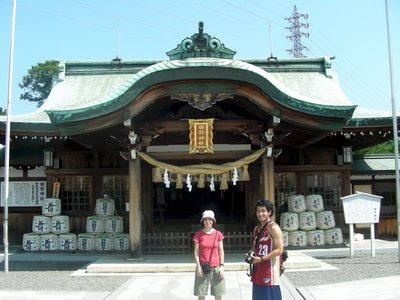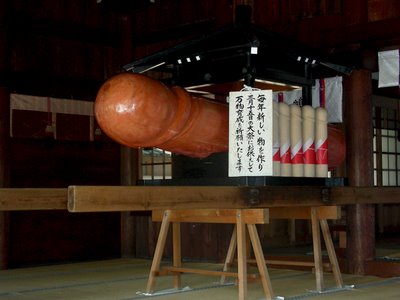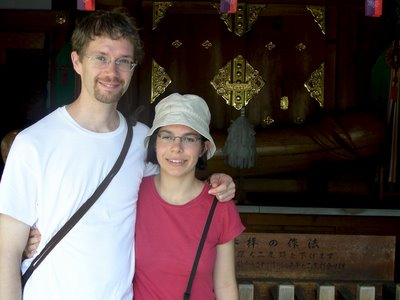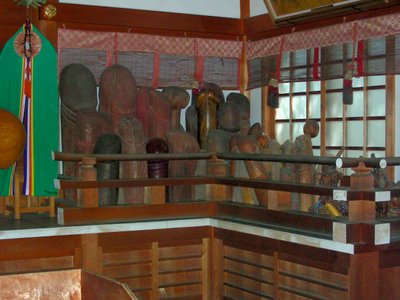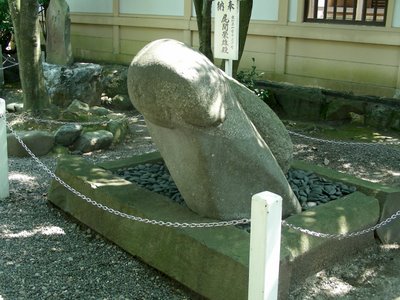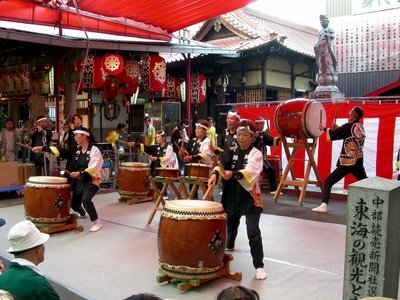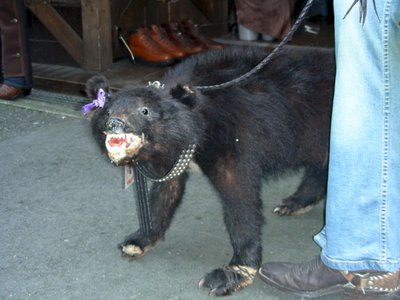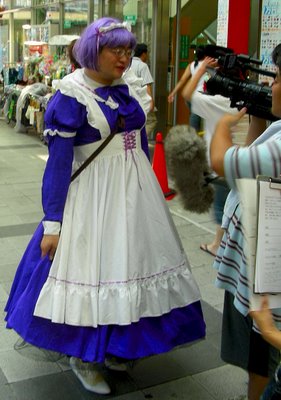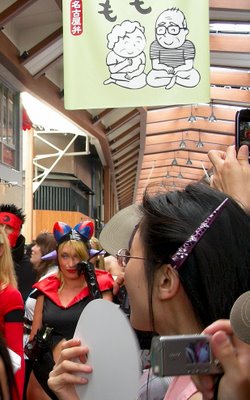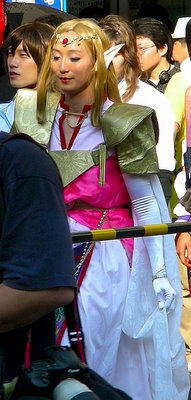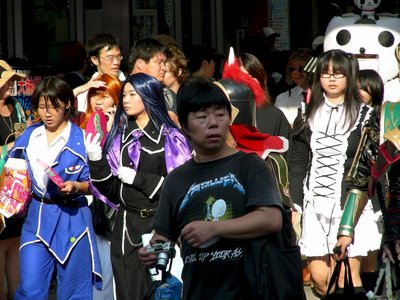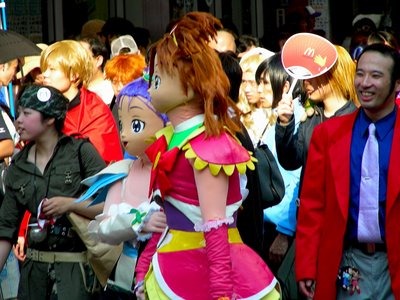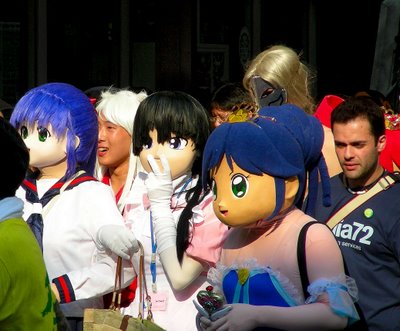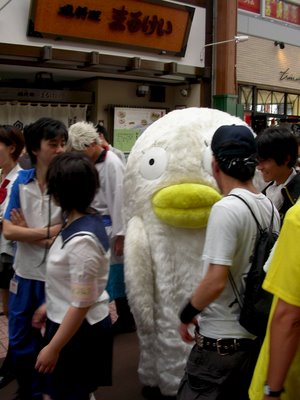
A back view of Inuyama Castle from the Kiso river (famous for its cormorant fishing).

Next we stumbled upon a practice sumo ring set up in a barn-like structure in the woods. The ring is made of the sameknotted rope that you see wrapped around sacred trees and other artififacts at Shrinto shrines and designates a sacred space or place in which a kami (god-spirit) is thought to dwell.
Salt to sprinkle on the ring before a match.
At a small Tendai temple near the sumo ring, we saw real pomegranites ripening on a tree.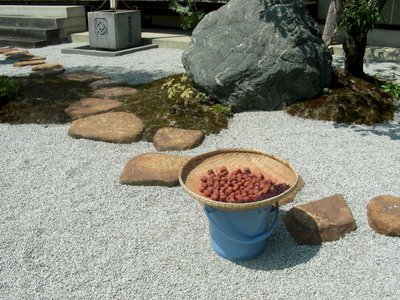
And at another little Rinzai temple, ume (plums) set out to dry in the sun before pickling.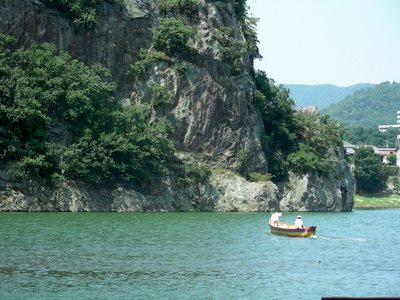
Back along the river, a traditional boat moving towards the shoreline that marks the boundary between Gifu and Nagoya.
When we arrived at Atsuta a very excited woman in her mid-forties pointed out this enromous white snakeskin on Atsuta's most sacred tree. The snake, she said, had been discovered the day before and by all estimates was some 3 meters long. Because Atsuta is famous as the keeping grounds for the Excalibur-like "snake sword" (a gift of the Sun Godddess to her grandson in order to kill a giant snake) the appearence of the creature seems to be particularly auspicious.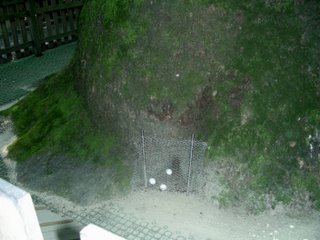
The keepers of the shrine even left fresh chicken eggs out as an offering to the snake...

On the way out we watched people feeding the turtles and koi bits of rice and bread.
